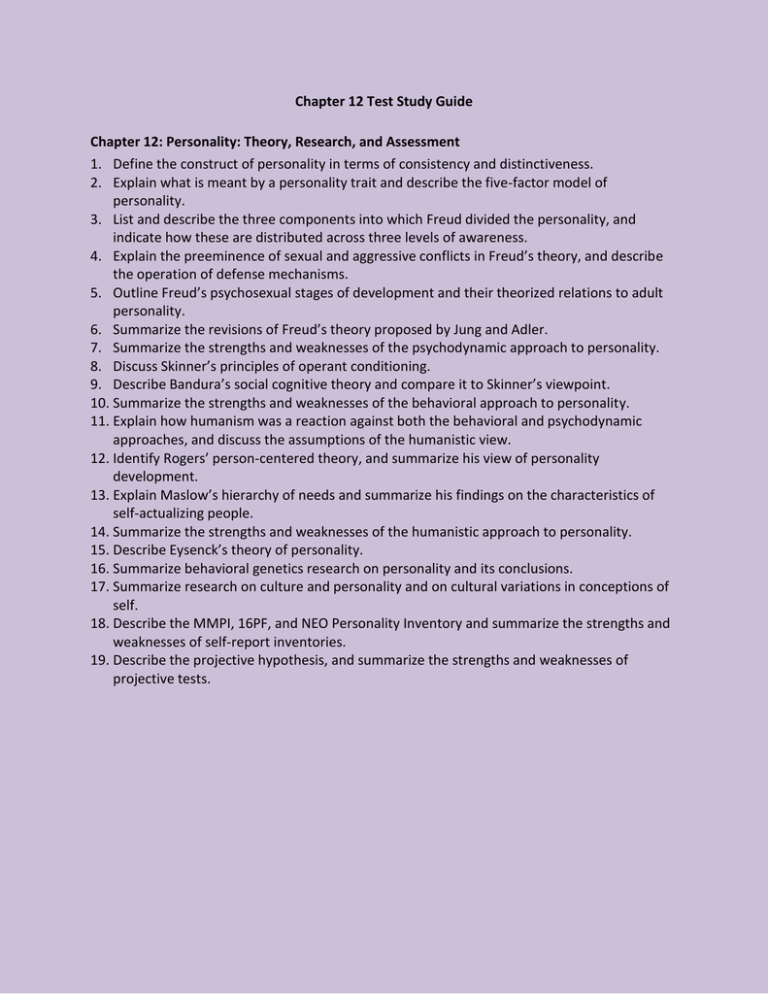Chapter One
advertisement

Chapter 12 Test Study Guide Chapter 12: Personality: Theory, Research, and Assessment 1. Define the construct of personality in terms of consistency and distinctiveness. 2. Explain what is meant by a personality trait and describe the five-factor model of personality. 3. List and describe the three components into which Freud divided the personality, and indicate how these are distributed across three levels of awareness. 4. Explain the preeminence of sexual and aggressive conflicts in Freud’s theory, and describe the operation of defense mechanisms. 5. Outline Freud’s psychosexual stages of development and their theorized relations to adult personality. 6. Summarize the revisions of Freud’s theory proposed by Jung and Adler. 7. Summarize the strengths and weaknesses of the psychodynamic approach to personality. 8. Discuss Skinner’s principles of operant conditioning. 9. Describe Bandura’s social cognitive theory and compare it to Skinner’s viewpoint. 10. Summarize the strengths and weaknesses of the behavioral approach to personality. 11. Explain how humanism was a reaction against both the behavioral and psychodynamic approaches, and discuss the assumptions of the humanistic view. 12. Identify Rogers’ person-centered theory, and summarize his view of personality development. 13. Explain Maslow’s hierarchy of needs and summarize his findings on the characteristics of self-actualizing people. 14. Summarize the strengths and weaknesses of the humanistic approach to personality. 15. Describe Eysenck’s theory of personality. 16. Summarize behavioral genetics research on personality and its conclusions. 17. Summarize research on culture and personality and on cultural variations in conceptions of self. 18. Describe the MMPI, 16PF, and NEO Personality Inventory and summarize the strengths and weaknesses of self-report inventories. 19. Describe the projective hypothesis, and summarize the strengths and weaknesses of projective tests.

